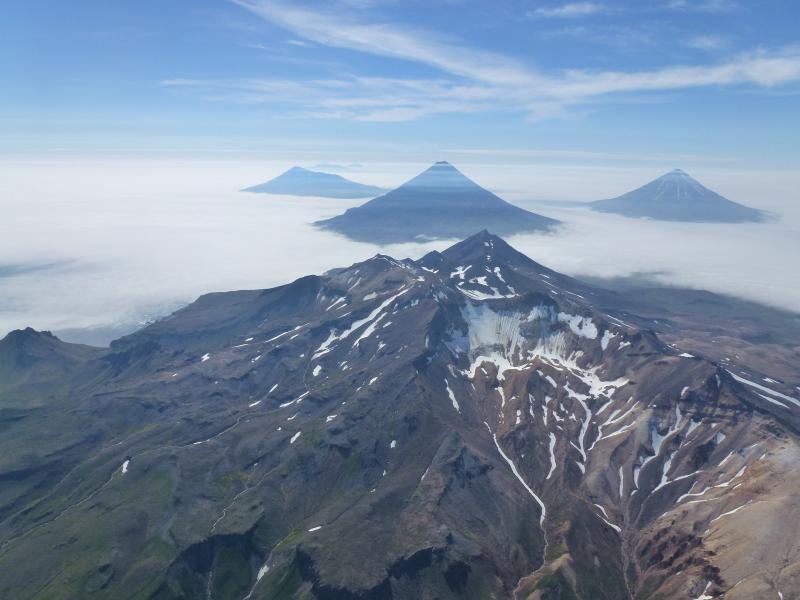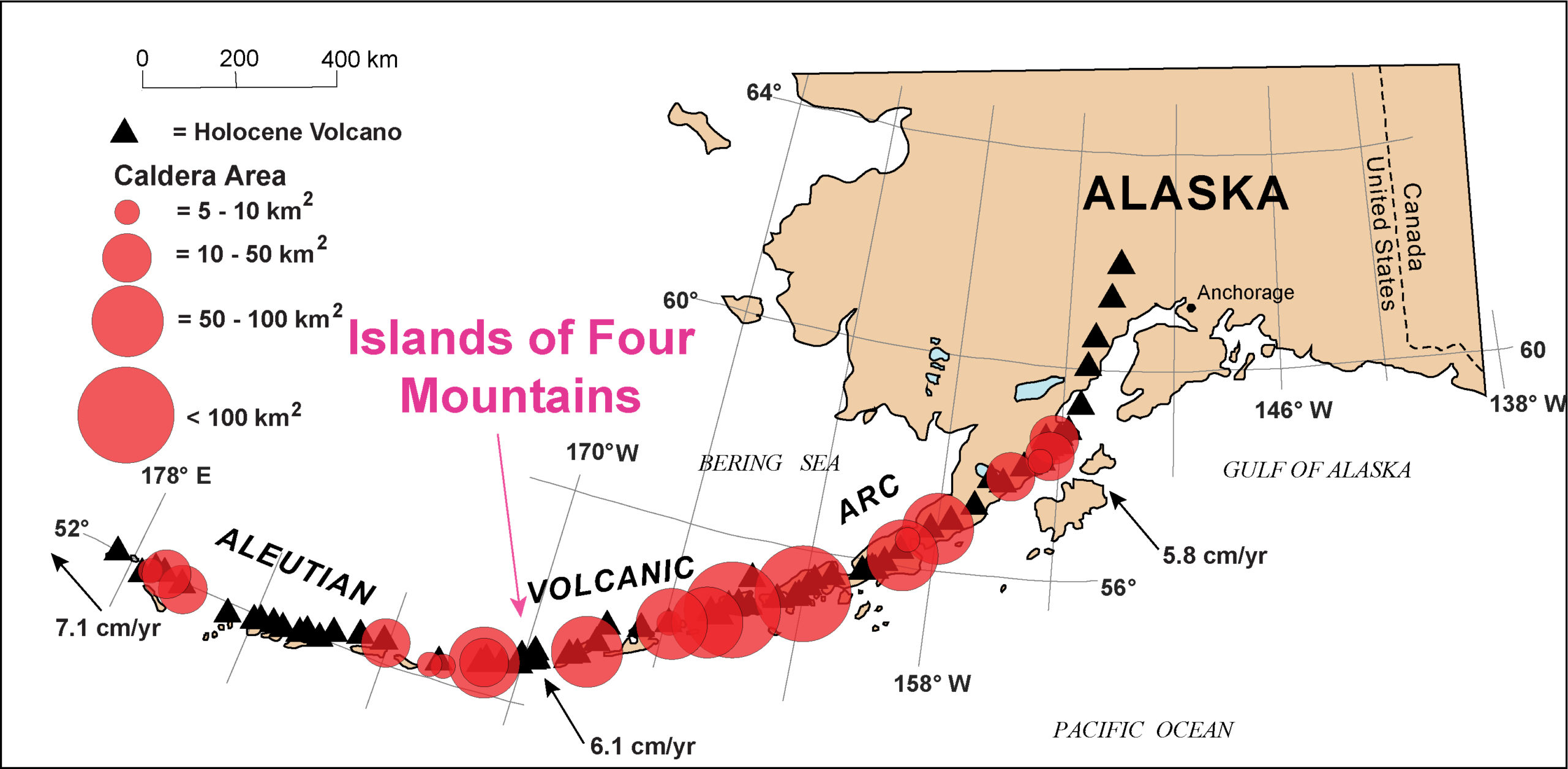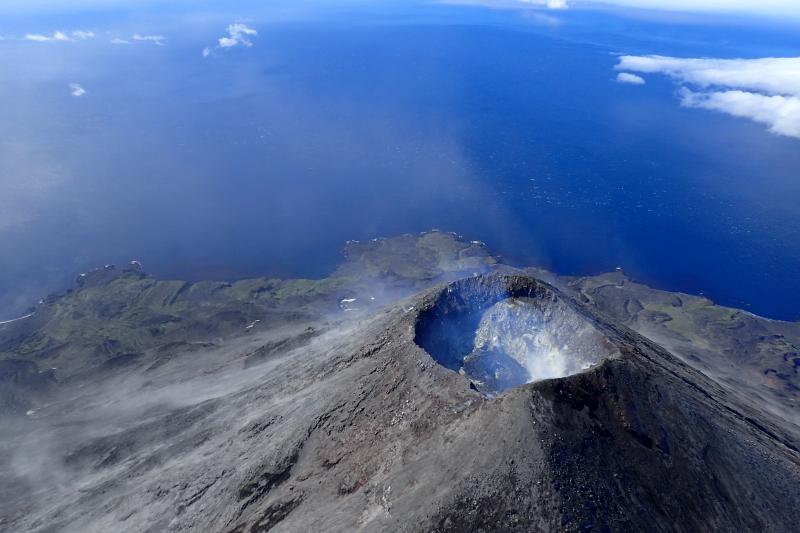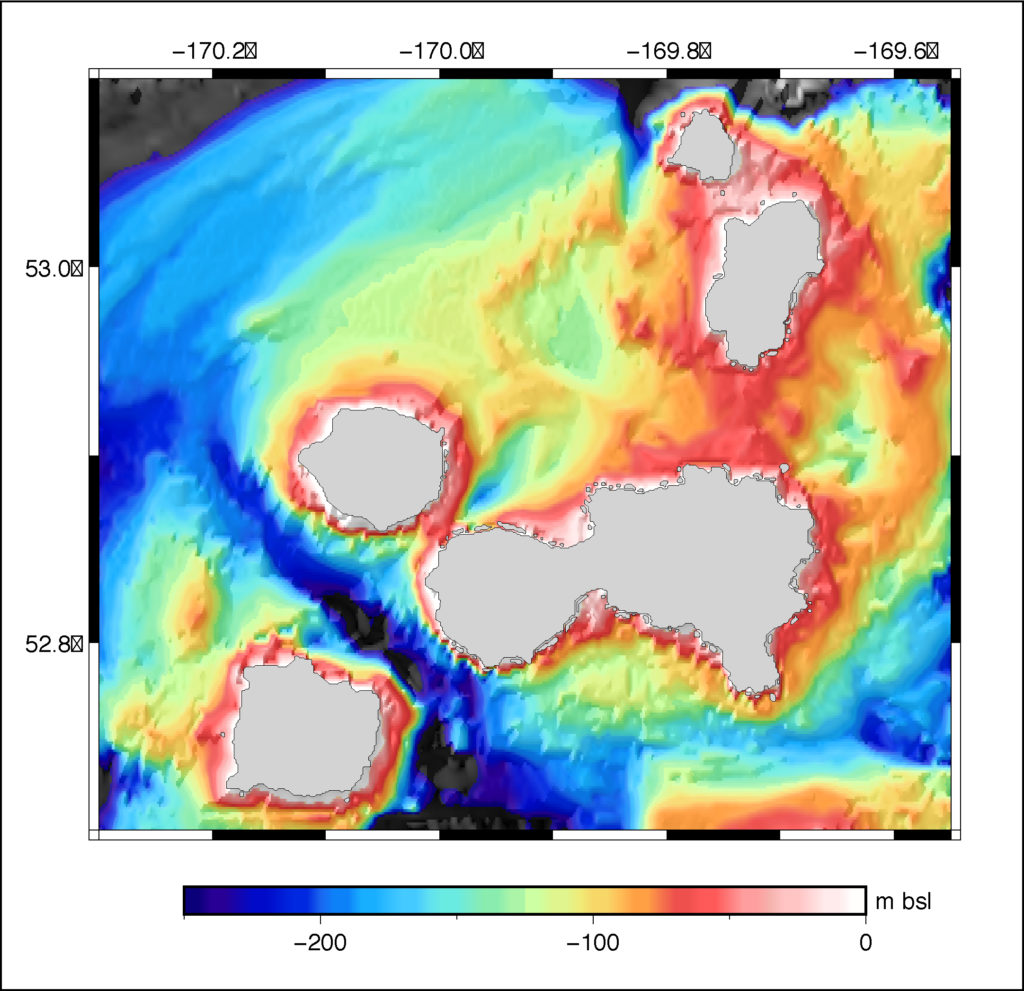O aglomerado de ilhas vulcânicas podem ser partes "interconectadas" de um vulcão gigante ao largo do Alasca, indicam cientistas.
Um vulcão gigante e muito vivo pode estar escondido sob as águas que cercam a cadeia central das Ilhas Aleutas do Alasca, de acordo com a American Geophysical Union.
Segundo cientistas de várias organizações, há diversas evidências que sugerem que esse aglomerado de ilhas vulcânicas são afinal partes "interconectadas" de uma enorme caldeira vulcânica.
O tamanho exacto da caldeira e a idade ainda não foram determinados, mas os cientistas suspeitam que seja pré-histórica.
"Se as suspeitas dos cientistas estiverem corretas, a caldeira vulcânica recém-descoberta pertencerá à mesma categoria de vulcões como a Caldeira de Yellowstone ou outros vulcões que tiveram supererupções com graves consequências globais”.
A.G.U., comunicado de imprensa
A caldeira suspeita ao largo do Alasca está abaixo da secção das Ilhas das Quatro Montanhas das Aleutas centrais, dizem as autoridades. A área abriga seis vulcões “e uma série de cones de cinzas e fissuras subsidiárias”, de acordo com a investigação.
Entre os vulcões está o Monte Cleveland, que é “sem dúvida o vulcão mais ativo da América do Norte nos últimos 20 anos”, disseram as autoridades no comunicado. Os cientistas acham que a teoria da caldeira pode ajudar a explicar por que Cleveland é tão activo.
Caldeiras são “uma grande depressão vulcânica em forma de bacia” que se forma quando o magma irrompe de “um reservatório de magma subterrâneo raso” e o solo desaba, de acordo com a U.S. Geological Survey.
As evidências desta caldeira incluem uma misteriosa “anomalia de gravidade em forma de anel” conectando os vulcões; “enxames de microterramotos” que sugerem “migração de fluido magmático”; e altas emissões de enxofre em Monte Cleveland, que só poderiam resultar da conexão “com uma fonte maior de magma”, diz o relatório.
Os cientistas não forneceram um tempo estimado para a formação da caldeira. No entanto, a erupção que o criou poderia “ter efeitos globais”, de acordo com o comunicado.
Para provar a existência deste vulcão, os cientistas planeiam “fazer uma análise no fundo do mar, estudar rochas vulcânicas, recolher mais dados sísmicos e gravitacionais, e observar amostras de áreas geotérmicas”.
A small group of volcanic islands in Alaska’s Aleutian chain might be part of a single, undiscovered giant volcano, say scientists presenting the findings Monday, 7 December 2020 at AGU’s Fall Meeting 2020. If the researchers’ suspicions are correct, the newfound volcanic caldera would belong to the same category of volcanoes as the Yellowstone Caldera and other volcanoes that have had super-eruptions with severe global consequences.
Credit: Hélène Le Mével
The Islands of the Four Mountains in the central Aleutians is a tight group of six stratovolcanoes named Carlisle, Cleveland, Herbert, Kagamil, Tana and Uliaga. Stratovolcanoes are what most people envision when they think of a volcano: a steep conical mountain with a banner of clouds and ash waving at the summit. They can have powerful eruptions, like that of Mount St. Helens in 1980, but these are dwarfed by far less frequent caldera-forming eruptions.
(...)
Despite all these signs, Diana Roman along with John Power, a researcher with the U.S. Geological Survey at the Alaska Volcano Observatory and the study’s lead author, maintain that the existence of the caldera is not by any means proven. To do that the study team will need to return to the islands and gather more direct evidence to fully test their hypothesis.
“Our hope is to return to the Islands of Four Mountains and look more closely at the seafloor, study the volcanic rocks in greater detail, collect more seismic and gravity data, and sample many more of the geothermal areas,” Roman said. Read more here
Credit: Researchers
John Power, Alaska Volcano Observatory / Diana Roman, Carnegie Institution for Science.
Geração 'explorer'
12.02.2021

.jpg/800px-Alaska's_Aleutian_Island_(ASTER).jpg)





No comments:
Post a Comment